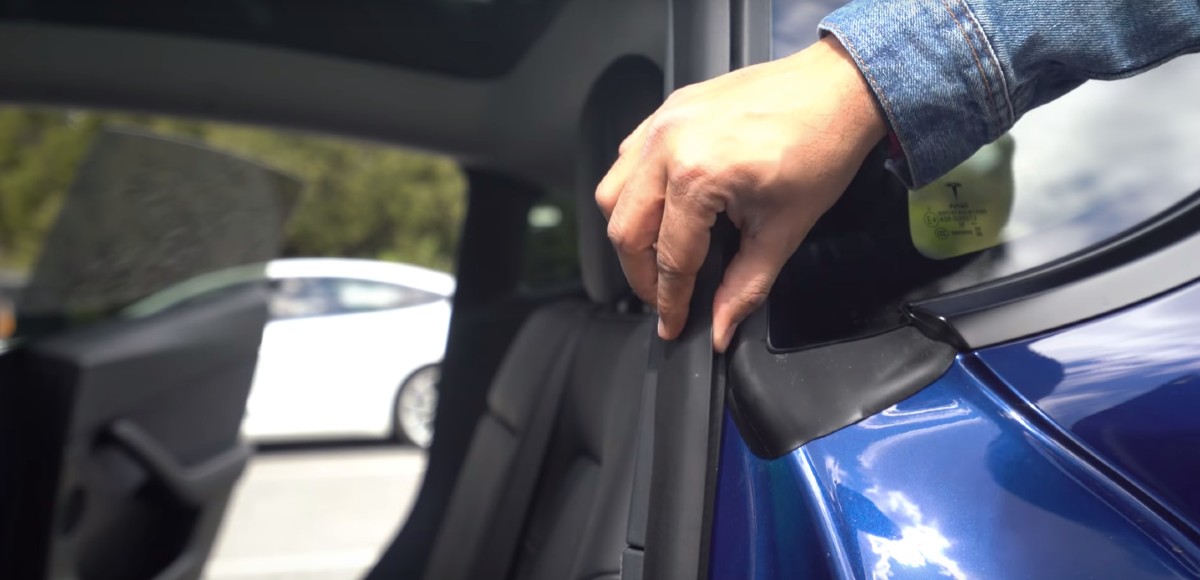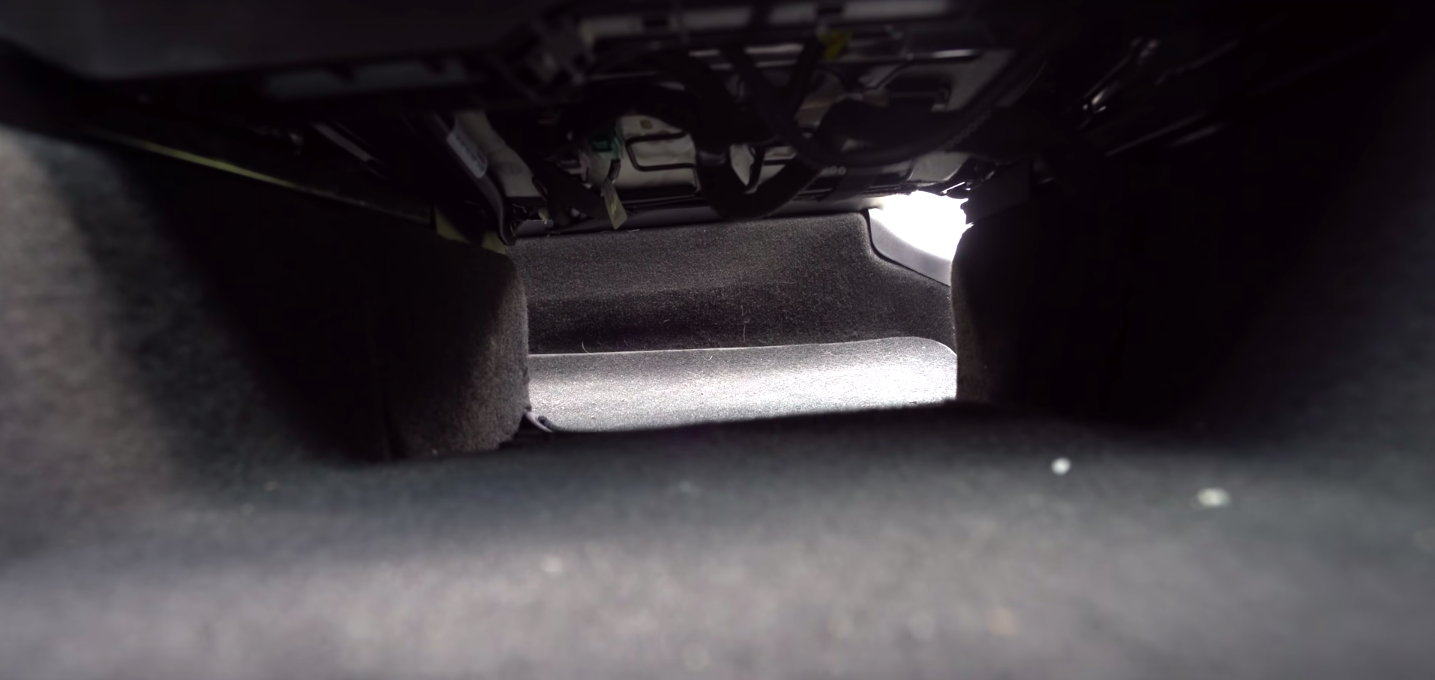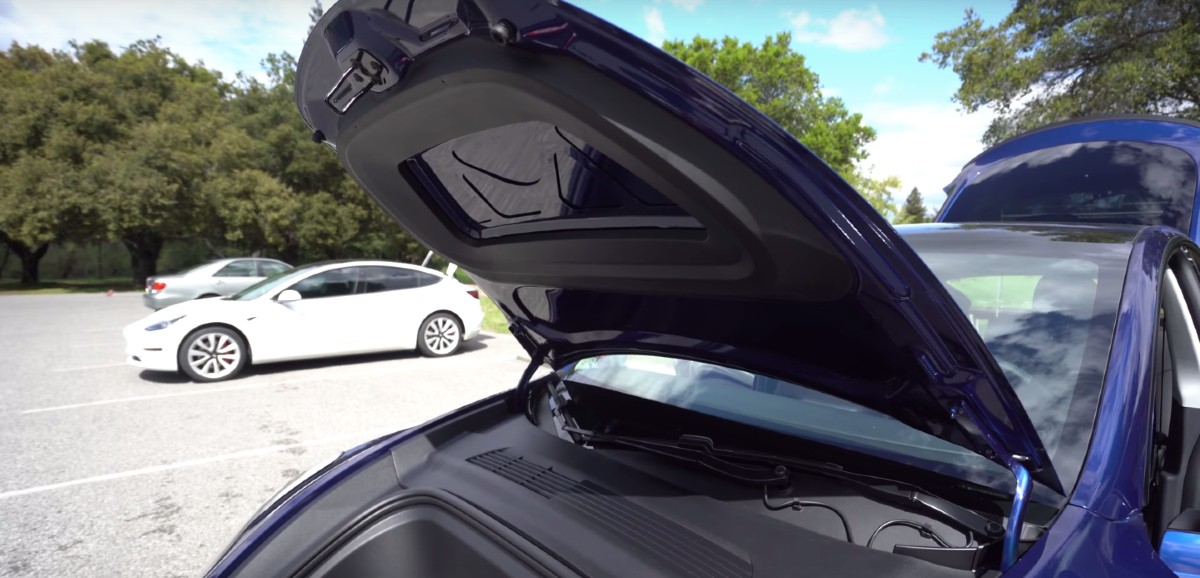Tesla Model Y is full of new convenience features that make the ownership experience of the electric crossover second to none. However, what goes unseen are secret tidbits that Tesla engineers implemented in the Model Y that make it stand even further apart from other vehicles in its category.
YouTuber and Tesla owner Tesla Raj delved into his six favorite “secrets” of the Model Y that you may not know of.
Magnetic Sun Visors
The first change on the Model Y that Raj notes as one of his favorites on the new crossover is the magnetic sun visor “clip.” In past Tesla vehicles, like the Model 3, the sun visor has utilized a clip and bar system, where the bar snaps into the clip, locking the visor into place.
Tesla improved upon the visor by implementing a magnet system that simply closes the visor into place without excessive pulling or pushing that can create a hassle for a driver when operating the vehicle. The visor still extends and is maneuverable so it can be adjusted to block the sun at any angle. The magnetic system creates a more relaxed lodging and dislodging experience for drivers when they would like to use it to keep the bright light in the sky out of their eyes.

Door Seals
Arguably, one of the most satisfying feelings that define luxury over economy is the sound of a closing door.
Tesla has installed a sturdier, thicker, and firmer door seal with the Model Y, creating a distinctive and robust sound indicating the car door is sealed shut. Raj compared the sound Model Y makes when shutting the door with that of the Model 3 and took notice of a deeper and sturdier sound from the all-electric crossover. Moreover, the seal in the Model Y is of better quality and contours around the vehicle’s curves with more precision over Model 3.

Trunk Vents
Model Y includes trunk vents on both corners of the rear trunk where the side compartments are located. The driver’s side vent houses the Charge Port pull tab, that can alleviate a jammed charging port door if it becomes stuck.
The passenger side vent contains the vehicle’s subwoofer and acts as relief for the air that pushes through the speaker.
Under-Seat Storage Space
The driver’s and passenger’s seats of the Model Y both have a 5″ tall by 14″ wide by 7″ long space beneath them, creating the impression that it could be used to store anything from books, to games, to possibly a homemade drawer under it. Raj believes someone with the proper craftsmanship could build a small drawer that could be fashioned under the seat, creating extra storage space any sort of object. With kids, this could be a perfect opportunity to store coloring books, handheld game systems, DVDs, or other entertainment outlets during a long drive.

Hood/Frunk Polymer Seal
The frunk on previous Tesla models seemed to have a considerable space between the actual frunk door and the bottom of the storage compartment, leaving space for items, like food or drinks, to move around excessively. This increased the risk of spillage or movement, so Tesla created a large seal that gets rid of this extra space. The storage is still the same as the seal does not pass the upper-outer lip of the frunk, but it certainly creates a more secure environment for whatever is stored in the compartment.

Pedestrian Warning Speaker
In Early September 2019, Tesla complied with the National Highway Transportation Safety Administration (NHTSA) mandate that required electric vehicles traveling below 19 MPH to omit a noise to increase pedestrian awareness of quiet electric cars. Model 3’s manufactured around that time were all outfitted with this speaker, and it appears the Model Y also has speakers as well. While the mandate does not go into effect until September 2020.
Tesla Raj’s full video on six Model Y secrets is below.
[embedded content]

<!–
–>


